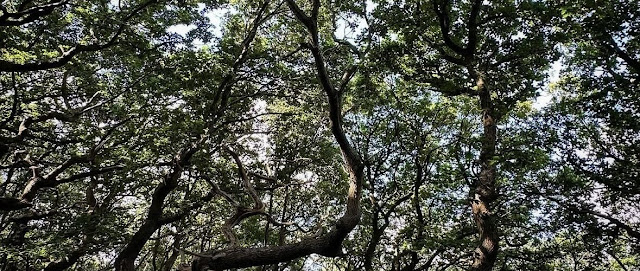L is for Ladies Spring Wood
Ladies Spring Wood is an ancient woodland, dating back to at least AD 1600. Its name, shape, and location indicate its ancient origins. The word "spring" refers to an Old English term for coppice wood, its uneven shape suggests long-term land clearance, and it borders the ancient parish and historic boundaries of Sheffield and Norton.
Ancient woods are either primary or ancient secondary. Primary woods have never been completely cleared, while ancient secondary woods were cleared and later reforested before 1600. Ladies Spring Wood is likely a primary woodland due to its steep slope and absence of settlement remnants.
From the late 12th century until the 16th-century Dissolution of the Monasteries, the wood belonged to Beauchief Abbey. Post-dissolution, it passed through several private hands before Sheffield City Council acquired it in 1931. It was designated a Site of Special Scientific Interest (SSSI) in 1954.
Historically, the wood was managed using coppice-with-standards, where most trees were periodically cut down to promote multiple stems from the stumps, while some were allowed to grow tall for timber. This method was primarily for fuel production, such as charcoal and whitecoal. Remnants of this practice include charcoal platforms and whitecoal kilns, which date back to medieval times and the period between 1575 and 1750.
Coppicing ceased by the late 19th century, leading to a transition to a canopy wood with single-stemmed trees. Non-native species were introduced post-coppicing. Today, the wood predominantly consists of sessile oak, birch, rowan, ash, and alder, with some Scots pine and a variety of understorey species. Hazel, once widespread, has declined due to reduced light following the end of coppicing.






0 Comments